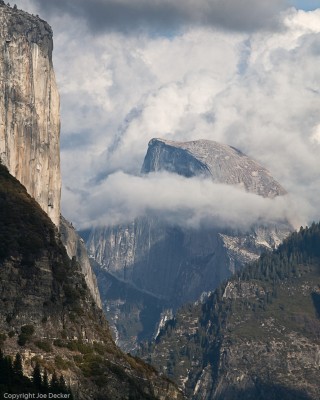The Tuesday Composition: Telephoto Compression

If you like this article, you can now get the book! Joe has expanded the “Tuesday Composition” series into an inspiring new ebook on composition, especially for nature photography. Check it out: The Tuesday Composition.
Just as I often turn to wide-angle lenses when I want to create images with a sense of depth and perspective, when I purposefully want to lose a sense of depth, when I want to compress elements of an image in order to abstract or combine them, then I’ll often look to the longer end of my over-abundant collection of lenses.
First, it’s worth acknowledging that, pedantically, telephoto lenses don’t change perspective (warning: PDF document). Seen from the same point, two objects will change in size, but proportionally, when you change lenses. Of course, if you change your shooting position to compensate for the new focal length, that’s a different matter entirely. So I’ll avoid saying that telephoto lenses change the perspective in a scene.
But there is a real, identifiable “look” to images we extract out of a scene using a long telephoto lens. We often talk about telephoto images as looking “flat” or “compressed”, these images do not seem to trigger our visual system into perceiving an illusion of depth in the image the way that many wide-angle shots do. Where does that look come from? I believe it primarily comes from two factors. (more…)